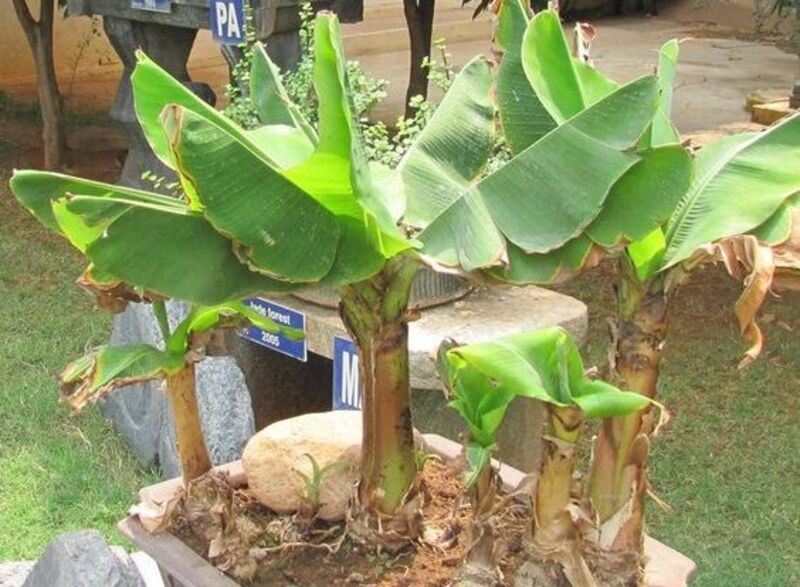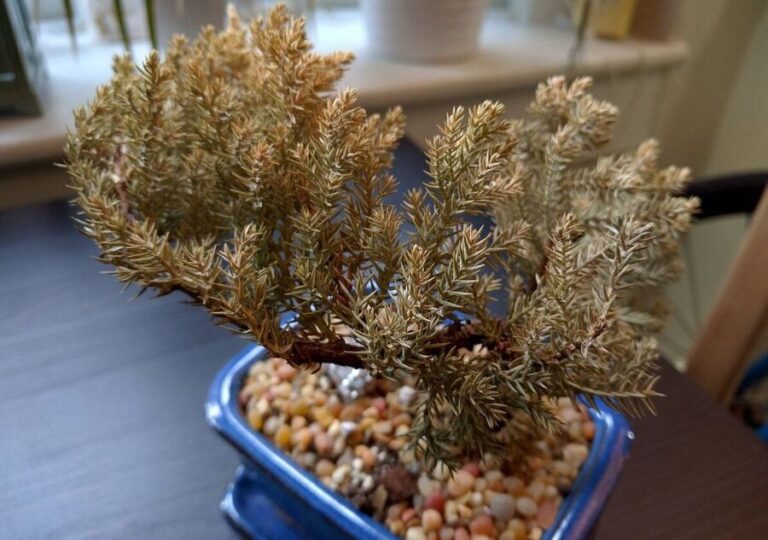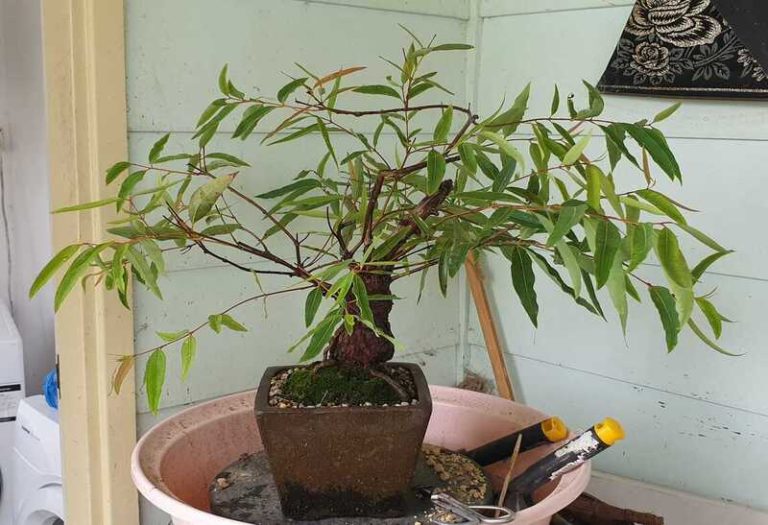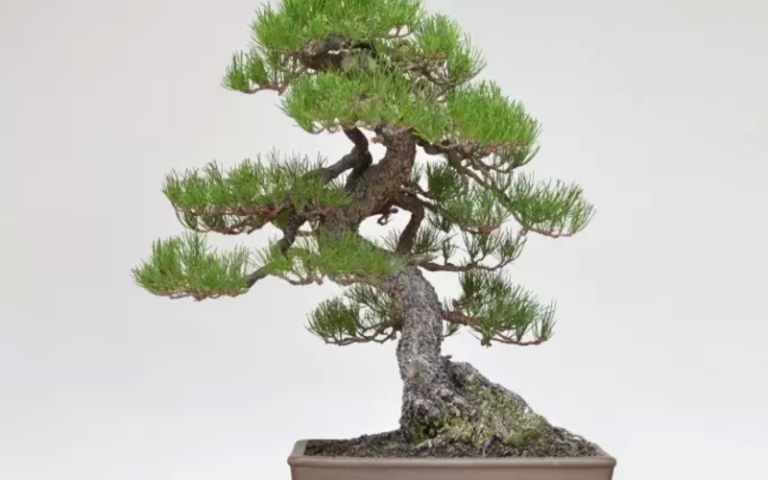Banana Bonsai Trees: Miniature Tropical Wonders
Bonsai trees are like little pieces of nature’s art that you can put on your table. Imagine having a banana tree as your bonsai! It’s called a Banana Bonsai Tree. Even though these little trees are small, they need a lot of love and care to grow well.
What is a Banana Bonsai Tree?
A Banana Bonsai tree is a miniature, beautiful rendition of a banana tree produced using the bonsai method. Pruning and shaping are required to replicate the growth of a full-sized banana tree. This approach is not appropriate for all banana species. It’s a skillful and careful method of gardening that yields a small but realistic-looking banana tree.
History and Origins of the Banana Bonsai Tree
The Banana Bonsai tree’s history and origins may be traced back to the ancient discipline of bonsai, which started in China and was subsequently improved in Japan. While cultivating small trees as art extends back over a thousand years, the specific adaption of banana plants into bonsai is a more recent development.
Bonsai art was developed in China as a means of creating miniature, symbolic representations of nature in containers. It finally found its way to Japan, where it became inextricably linked to Japanese culture and aesthetics. Traditional bonsai techniques were mostly used on East Asian natural trees including pine, maple, and juniper.
As the art form matured and flourished, tropical and subtropical tree species, like the banana tree, were progressively included into the realm of bonsai. Non-native plants, such as banana trees, provided new chances for experimentation and creativity in bonsai gardening.
Banana Bonsai trees most likely evolved as a unique category in the latter part of the twentieth century, when bonsai artists and fans began to investigate diverse tree species from across the world. Banana trees’ comparatively big leaves, distinctive trunk structure, and tropical beauty provided artistic and horticultural difficulties that drew bonsai practitioners.
While the practice of cultivating banana trees as bonsai is a recent adaption, it draws on the rich history and methods of traditional bonsai. Banana Bonsai tree culture is evolving as artists experiment with different approaches to create these small tropical beauty while honoring historical bonsai growth practices.

Banana Bonsai Trees and Their Symbolism
Banana Bonsai trees represent characteristics of nature, development, and the human relationship to the environment via cultural and aesthetic symbolism. The following are some of the metaphorical connotations linked with Banana Bonsai trees:
Tropical Aesthetics: Banana plants are naturally associated with the tropics and exotic surroundings. A Banana Bonsai tree represents a link to other lands, warmth, and relaxation. Its presence might evoke memories of holidays and the charm of tropical islands.
Growth and Transformation: Bonsai art itself represents the beauty of growth and metamorphosis. A Banana Bonsai tree, like other bonsai, represents the time-consuming process of nurturing and sculpting anything. This reflects personal development and the belief that patience and effort may yield extraordinary outcomes.
Nature’s Beauty in Miniature: Banana Bonsai Trees encapsulate the magnificence of nature in a little package. They serve as a reminder that the beauty and intricacy of the natural world may be found and appreciated even in the tiniest of areas.
Resilience: A Banana Bonsai tree demands great attention and maintenance to grow and sustain. The tree’s capacity to respond favorably to pruning, training, and other care methods can be seen as a metaphor of flexibility and fortitude in the face of adversity.
Connection to Cultural Traditions: Banana trees have cultural importance around the world, frequently signifying fertility, richness, and success. Including a Banana Bonsai tree in a bonsai collection can help fans connect with these cultural values and customs.
Aesthetic Artistry: Because of their particular traits, such as huge leaves and curving trunks, banana bonsai plants provide a unique creative challenge. Creating an aesthetically appealing miniature model of a banana tree demonstrates the bonsai artist’s talent and ingenuity.
Balance and Harmony: The balance of the tree’s different elements—trunk, branches, leaves, and roots—reflects the harmony of nature, much as it does in conventional bonsai. The design of a Banana Bonsai tree strives for this balance, producing a sense of calm and togetherness.
Personal Expression: Bonsai, especially Banana Bonsai Trees, enables fans to exhibit their individuality and creativity. Each tree is one-of-a-kind, reflecting the artist’s decisions in shape, style, and maintenance.
A Banana Bonsai tree invites reflection and admiration of nature’s beauty as well as the artistry of human nurture. Its meaning involves development, harmony, and the awe of bringing a piece of the natural world to life in little, fascinating form.
Characteristics of the Banana Bonsai Tree
Banana Bonsai trees have unique traits that distinguish them from other varieties of bonsai trees. These characteristics contribute to their distinct look as well as the difficulties they offer in terms of maintenance and cultivation. Here are some of the most important aspects of Banana Bonsai trees:
1. Large Leaves: When compared to other conventional bonsai species, one of the most apparent characteristics of Banana Bonsai plants is their comparatively big leaves. These leaves are characteristic of banana plants and add to their tropical appearance.
2. Distinctive Trunk: The trunk of a Banana Bonsai tree has a distinctive and curvy appearance. This tree’s curved and textured trunk reflects the development patterns of full-sized banana trees, adding to its natural beauty.
3. Tropical Vibes: The presence of Banana Bonsai plants quickly transports you to the tropics and exotic settings. Their beauty takes viewers to rich and warm environments, making them an intriguing addition to bonsai collections.
4. Challenging Growth: Banana plants grow quickly, which can be both a benefit and a task for growing bonsai. On the one hand, it lets the tree grow faster, but on the other hand, it needs to be pruned and cared for more often to stay the right size and shape.
5. Height and Size: Banana Bonsai trees can reach different heights depending on the type and the care they receive. While they may not grow to the towering heights of their full-sized counterparts, they can nevertheless grow to be rather tall when compared to other bonsai kinds.
6. Unique Pruning Techniques: Banana Bonsai plants need special trimming techniques due to their huge leaves and rapid development. To keep the tree’s proportions and visual appeal, thin down the leaves and carefully shape the canopy.
7. Warmth and Sunlight Needs: Banana Bonsai trees, like their genuine counterparts, thrive in warm, well-lit situations. They require plenty of sunshine to thrive and produce their very huge leaves.
8.Artistic Potential: Despite the difficulties they bring, Banana Bonsai plants provide a canvas for bonsai artists to express themselves. To build a visually beautiful and harmonious tree, it is necessary to shape the trunk, manage leaf size, and balance the overall design.
9, Indoor and Outdoor Options: While certain Banana Bonsai trees may be cultivated indoors, they generally benefit from spending time outdoors during the warmer months. This decision is influenced by factors such as climate and the type of banana being grown.
10. Symbolism and Aesthetics: A Banana Bonsai tree’s symbolism combines both the cultural significance of banana trees and the grower’s personal aesthetic preferences. The tree’s distinct look and tropical appeal add to its attractiveness.
Banana Bonsai trees display traits that honor their tropical origins, present horticultural problems, and provide an aesthetic canvas for enthusiasts to explore. Their huge leaves, unique stems, and affinity for warmer regions make them an enticing choice for people who admire the art and beauty of bonsai maintenance.
How to Grow a Banana Bonsai Tree
Growing a Banana Bonsai tree requires careful selection, feeding, and artistic trimming. While it may be a gratifying effort, it also demands patience and commitment. Here’s a step-by-step method to growing your very own Banana Bonsai tree:
Selecting the Right Banana Species
Choose a bonsai-friendly banana species, such as the “Dwarf Cavendish” banana. Investigate the precise requirements of the species you’ve chosen.
Gathering Materials:
- Obtain a young banana plant sapling from a nursery or garden center.
- Collect the necessary tools, including bonsai pruning shears, wire for shaping, a bonsai pot with good drainage, and well-draining bonsai soil.
Potting the Sapling:
- Gently remove the sapling from its original pot and loosen the root ball.
- Place the sapling in the bonsai pot, ensuring the roots are spread out evenly.
- Fill the pot with bonsai soil, pressing it gently to secure the sapling in place.
Pruning and Shaping:
- Allow the sapling to grow a bit before beginning major pruning.
- As the sapling grows, start pruning excess branches and leaves to encourage the desired shape and size. Focus on creating a balanced canopy.
Wiring and Training:
- Use bonsai wire to gently shape the branches and trunk as they grow. Be careful not to wrap the wire too tightly to avoid damaging the tree.
- Gradually adjust the wiring as the branches thicken and harden, ensuring they maintain the desired position.
Watering and Feeding:
- Water the bonsai regularly, ensuring the soil is moist but not waterlogged. Use a well-draining soil mix to prevent water accumulation.
- Feed the tree with a balanced bonsai fertilizer according to the recommended schedule. Follow the instructions on the fertilizer packaging.
Sunlight and Environment:
- Place the Banana Bonsai tree in a location with plenty of sunlight. However, avoid direct, intense sunlight that could scorch the leaves.
- If you’re growing your bonsai indoors, provide bright, filtered light near a window.
Monitoring and Pruning:
- Regularly inspect the tree for any signs of pests or diseases. Address any issues promptly.
- Continue to prune and shape the tree as it grows to maintain the desired size and form.
Repotting:
- Every few years, repot the Banana Bonsai tree to refresh the soil and encourage healthy root growth. Repotting is typically done in the early spring, before new growth begins.
Display and Enjoy:
- Once your Banana Bonsai tree has reached the desired size and shape, display it proudly in a location where it can be admired.
- Add decorative elements like rocks or moss to enhance the aesthetic appeal of your bonsai display.
Keep in mind that developing a Banana Bonsai tree is a slow process that involves constant observation, correction, and care. You may produce a little tropical masterpiece that adds a bit of nature’s beauty into your living area with patience and effort.
Displaying and Showcasing the Banana Bonsai Tree
Displaying and displaying your Banana Bonsai tree is a crucial part of enjoying its beauty and sharing your efforts with others. A well-presented bonsai may improve its aesthetic impact and provide an attractive focal point. Here are some presentation and showcasing ideas for your Banana Bonsai tree:
Choice of Display Area:
- Select a well-lit area for your Banana Bonsai tree. Natural light near a window is ideal, but ensure the tree is protected from harsh sunlight that could scorch the leaves.
- If you’re displaying your bonsai outdoors, choose a spot with dappled sunlight to avoid excessive exposure to direct sunlight.
Bonsai Stands and Tables:
- Elevate your Banana Bonsai tree on a bonsai stand or table to give it a prominent position and make it more accessible for viewing.
- Bonsai stands come in various styles and materials, allowing you to choose one that complements the aesthetics of your bonsai and your living space.
Accent Elements:
- Consider adding complimentary components to the display space, such as tiny ornamental pebbles, moss, or figurines. These features can improve the overall aesthetic appeal and help to create a more natural environment.
Pot Selection:
- Select a bonsai container that matches the design and aesthetics of your Banana Bonsai tree. The pot should be suitable to the tree’s size and complement its overall style.
- Traditional ceramic pots are commonly used, but you can also explore other materials like clay or wood.
Rotating the Bonsai:
- Periodically rotate your Banana Bonsai tree to ensure all sides receive equal exposure to light. This prevents uneven growth and encourages balanced development.
Exhibition and Events:
- Participate in local bonsai exhibitions or club events to showcase your Banana Bonsai tree to a wider audience.
- Networking with other bonsai enthusiasts can provide valuable feedback and inspire further improvement in your bonsai cultivation skills.
Bonsai Accents:
- Depending on the season, you can add bonsai accents such as miniature figurines, small ornaments, or even seasonal flowers to complement the display.
Regular Maintenance:
- Keep the area around your Banana Bonsai tree clean and tidy. Regularly remove fallen leaves and debris to maintain a polished appearance.
Photographs and Documentation:
- Document the progress of your Banana Bonsai tree through photographs. This allows you to track its growth and development over time.
- Sharing your bonsai journey on social media platforms or bonsai forums can connect you with fellow enthusiasts and offer opportunities for learning and inspiration.
Personal Enjoyment:
Finally, displaying and promoting your Banana Bonsai tree should offer you delight and satisfaction. Take some time to observe your work and appreciate the natural beauty you’ve created.
Remember, your Banana Bonsai tree exhibit is a representation of your creativity and effort. You may create an appealing and aesthetically engaging display that accentuates the particular beauty of your small tropical masterpiece with careful arrangement and attention to detail.

How to Care for and Maintain a Banana Bonsai Tree
Because these trees have distinct traits and development patterns, caring for and sustaining a Banana Bonsai tree necessitates paying close attention to specific requirements. You can assure the health and life of your little tropical masterpiece by following these care instructions:
Watering:
- Keep the soil consistently moist but not soggy. Allow the top inch of soil to dry out slightly between watering.
- Check the moisture level by inserting a finger into the soil. If it feels dry, it’s time to water it. If it feels moist, wait a little longer.
Sunlight:
- Place your Banana Bonsai tree in a location with bright, indirect sunlight. Avoid exposing it to intense midday sun, as this can scorch the leaves.
Temperature and Humidity:
- Banana Bonsai trees thrive in warm temperatures. Maintain a consistent room temperature between 65°F to 80°F (18°C and 27°C).
- Provide higher humidity levels by misting the leaves regularly or placing the bonsai on a tray filled with water and pebbles.
Fertilizing:
- Feed your Banana Bonsai tree with a balanced liquid fertilizer during the growing season (spring through summer).
- Follow the manufacturer’s instructions for dilution and frequency, and reduce or halt fertilization during the dormant winter months.
Pruning and Shaping:
- Regularly prune excess growth to maintain the desired shape and size. Focus on thinning out leaves to allow light to reach inner branches.
- Use bonsai pruning shears to make clean cuts and prevent damage to the tree.
Wiring and Training:
- Continue using wiring to shape and guide the growth of branches and the trunk. Check the wire regularly to ensure it’s not cutting into the bark.
- As the branches thicken, remove the wire to avoid scarring.
Repotting:
- Repot your Banana Bonsai tree every two to three years during the early spring before new growth begins.
- Gently trim and prune the roots, replace the soil, and move the tree to a slightly larger bonsai pot.
Pests and Diseases:
- Regularly inspect your bonsai for signs of pests such as aphids or spider mites. If you notice any pests, address them promptly using appropriate methods.
- Maintain good air circulation and avoid overwatering to prevent fungal diseases.
Rest Period:
- Banana Bonsai trees may experience a period of slowed growth or dormancy during the winter months. During this time, reduce watering and fertilization.
Observation and Adjustment:
- Observe your Banana Bonsai tree regularly for any changes in growth, leaf color, or overall health.
- Adjust your care routine based on the tree’s needs and the changing seasons.
Patience and Enjoyment:
Remember that growing and maintaining a Banana Bonsai tree is a patient and rewarding journey. Take pleasure in watching your tree evolve and flourish over time.
By providing the proper care and attention, you can create a healthy and visually appealing Banana Bonsai tree that brings the beauty of the tropics into your living space.
Banana Bonsai Tree Care Sheet
| Aspect | Care Tips |
| Watering | Keep soil consistently moist, but not waterlogged. |
| Water when the top inch of soil feels slightly dry. | |
| Sunlight | Place in bright, indirect sunlight. Avoid intense midday sun. |
| Provide 6-8 hours of filtered light daily. | |
| Temperature | Maintain room temperature between 65°F to 80°F (18°C to 27°C). |
| Protect from drafts and sudden temperature changes. | |
| Humidity | Maintain higher humidity levels by misting leaves or using humidity trays. |
| Aim for humidity around 50% or higher. | |
| Fertilization | Feed with balanced liquid fertilizer during the growing season (spring-summer). |
| Dilute fertilizer as per manufacturer’s instructions. | |
| Pruning and Trimming | Regularly prune excess growth to maintain shape. |
| Thin out leaves to allow light into the inner branches. | |
| Wiring and Styling | Use wiring to shape branches and trunk. Check for wire cutting into bark. |
| Adjust wiring as branches thicken to prevent scarring. | |
| Repotting | Repot every 2-3 years in early spring before new growth. |
| Trim and prune roots, replace soil, and move to slightly larger pot. | |
| Pest and Disease Control | Inspect regularly for pests like aphids and spider mites. |
| Address pests promptly with appropriate methods. | |
| Winter Care | Reduce watering and fertilization during winter dormancy. |
| Protect from cold drafts and sudden temperature drops. | |
| Regular Maintenance | Observe for changes in growth, leaf color, and health. |
| Adjust care routine based on tree’s needs and changing seasons. |
Remember that each Banana Bonsai tree is unique, and adjusting care based on its individual needs is important. Regular observation and a responsive approach will help ensure the health and beauty of your bonsai tree.
Conclusion:
Growing a bonsai banana tree is similar to becoming a tree artist. It takes time and care, but the small tree you construct is a work of art. So, if you’re up for a pleasant and patient quest, pick get a small banana tree and begin your bonsai voyage!
FAQ:
Q: What is a Banana Bonsai tree?
A: A Banana Bonsai tree is a small representation of a banana tree constructed using the bonsai technique. Pruning, shape, and care procedures are used to imitate the growth of a full-sized banana tree in a smaller form.
Q: Can any type of banana tree be used for bonsai?
A: Not all banana species are suitable for bonsai. Varieties like the “Dwarf Cavendish” are commonly used due to their manageable size and adaptability to bonsai techniques.
Q: How do I water my Banana Bonsai tree?
A: Keep the soil consistently moist, but avoid waterlogging. Water when the top inch of soil feels slightly dry to the touch.
Q: Where should I place my Banana Bonsai tree for sunlight?
A: Place it in a well-lit area with bright, indirect sunlight. Protect it from intense midday sun, which can scorch the leaves.
Q: What’s the ideal temperature range for my Banana Bonsai tree?
A: Maintain a room temperature between 65°F to 80°F (18°C to 27°C). Avoid sudden temperature changes.
Q: How often should I fertilize my Banana Bonsai tree?
A: Feed with a balanced liquid fertilizer during the growing season (spring through summer). Follow the instructions on the fertilizer packaging.
Q: How do I prune and shape my Banana Bonsai tree?
A: Regularly prune excess growth and thin out leaves to maintain shape and allow light into inner branches. Use bonsai pruning shears for clean cuts.
Q: Can I wire and style my Banana Bonsai tree like other bonsai trees?
A: Yes, you can use wiring to shape branches and the trunk. Check the wire regularly to avoid scarring as branches thicken.
Q: How often should I repot my Banana Bonsai tree?
A: Repot every 2-3 years in early spring before new growth begins. Trim and prune roots, replace soil, and move to a slightly larger pot.
Q: How do I prevent pests and diseases on my Banana Bonsai tree?
A: Regularly inspect for pests like aphids and spider mites. Address pests promptly with appropriate methods and maintain good air circulation.
Q: What care does my Banana Bonsai tree need in winter?
A: Reduce watering and fertilization during winter dormancy. Protect from cold drafts and sudden temperature drops.
Q: How can I ensure the long-term health of my Banana Bonsai tree?
A: Regularly observe your tree for changes and adjust your care routine accordingly. Stay attentive to its needs and enjoy the journey of growing and maintaining your bonsai.
Also Read:







